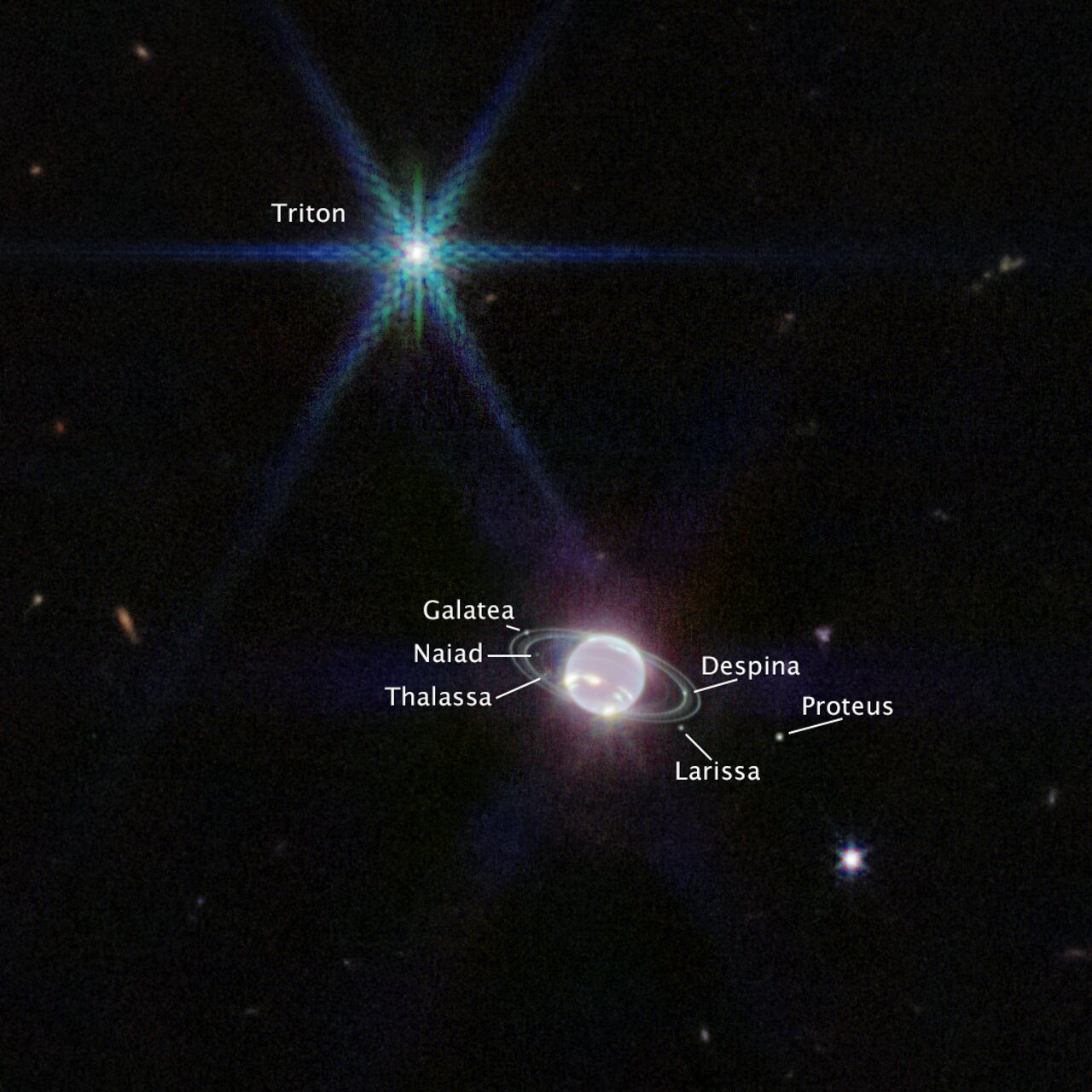Ever since Neptune’s discovery back on September 23, 1846, the planet has fascinated astronomers worldwide. The ice giant makes a complete orbit of our Sun every 164.8 years and hides its secrets in one of the dimmest parts of our Solar System. But when you shine the most powerful space telescope ever built on something, those secrets will be revealed. In this case, the clearest images of Neptune’s rings in over 30 years.
Being 30 times further away from the Sun than Earth, it’s not been particularly easy to take clear images of the planet on a regular basis. The last space probe to make it past the planet on its journey to the outer edges of our Solar System was Voyager 2.
Now, new snaps by JWST have re-excited astronomers by revealing details of the icy world with clarity we have not seen for decades. It’s not just the spectacular rings that have been revealed, but details of the planet itself.
“Neptune’s 164-year orbit means its northern pole, at the top of this image, is just out of view for astronomers, but the Webb images hint at an intriguing brightness in that area. A previously-known vortex at the southern pole is evident in Webb’s view, but for the first time Webb has revealed a continuous band of clouds surrounding it,” the European Space Agency (ESA) explained in a statement.
In the new set of images, JWST also captured seven of the 14 known moons of Neptune with great precision.

Neptune has 14 known satellites, and seven of them are visible in this image captured by the JWST. Image Credit: NASA, ESA, CSA, and STScI
“This planet is characterised as an ice giant due to the chemical makeup of its interior. Compared to the gas giants, Jupiter and Saturn, Neptune is much richer in elements heavier than hydrogen and helium. This is readily apparent in Neptune’s signature blue appearance in NASA/ESA Hubble Space Telescope images at visible wavelengths, caused by small amounts of gaseous methane,” ESA said.
JWST, however, sees in infrared, which travels more easily through cosmic dust and gas, which is why it can see further into the cosmos than Hubble.
Using the Near-Infrared Camera (NIRCam) that can capture objects within the near-infrared range between 0.6 to 5 microns, Neptune does not appear as blue to JWST as it does to Hubble, but instead rather quite dark.
“In fact, the methane gas is so strongly absorbing that the planet is quite dark at Webb wavelengths except where high-altitude clouds are present. Such methane-ice clouds are prominent as bright streaks and spots, which reflect sunlight before it is absorbed by methane gas. Images from other observatories have recorded these rapidly-evolving cloud features over the years.” ESA explained.
The latest images from JWST remind us that there are plenty more discoveries to be made in our own cosmic backyard and that Webb will certainly help unravel these in the years to come.
Source Link: JWST Captures Neptune And Its Intriguing Rings As We Have Never Seen Before